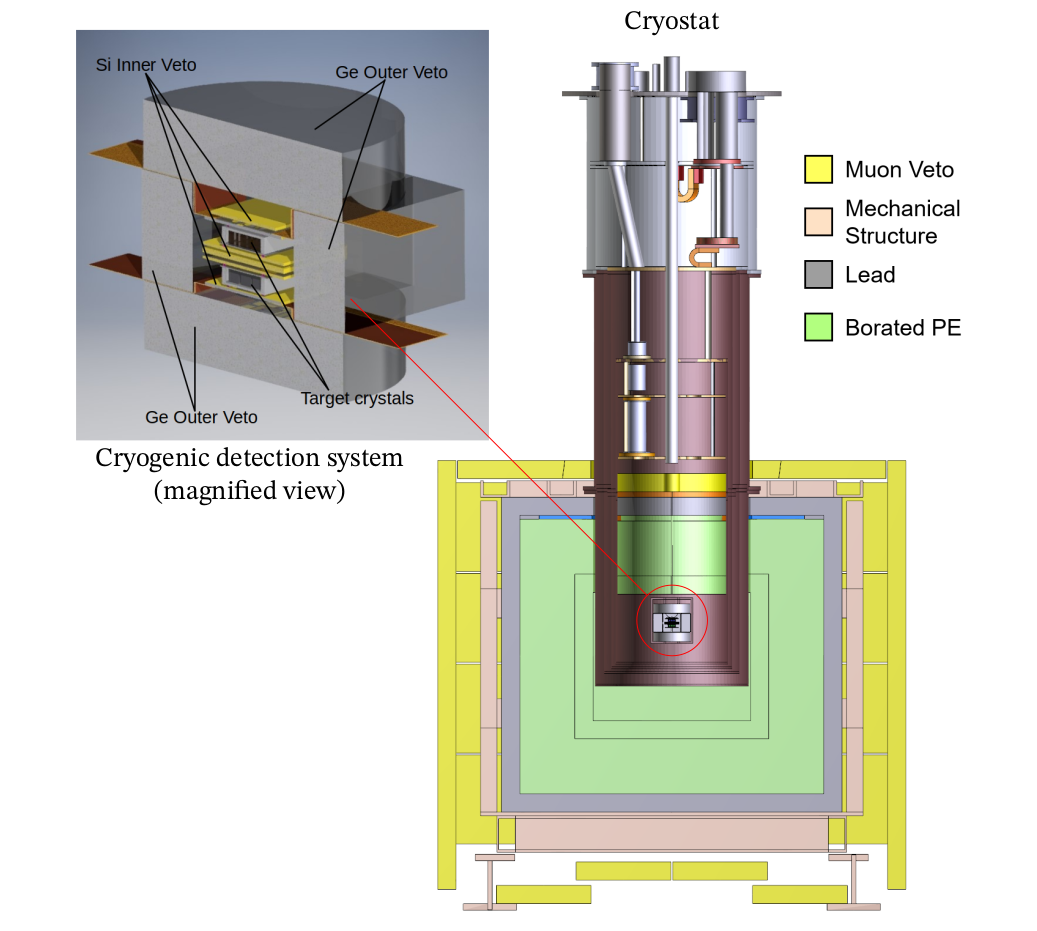
The NUCLEUS Collaboration aims to measure the coherent elastic scattering of neutrinos on nuclei using reactor (anti)neutrinos, in the fully coherent regime.
The scattering of a large flux of (anti)neutrinos produced by two nuclear reactors is detected on a network of cryogenic detectors operated at around 10 mK.
The experiment will be installed at the Chooz nuclear power plant in France, operated by Électricité de France.

© NUCLEUS Collaboration
NUCLEUS uses single, gram-scale crystals operated at mK temperatures as cryogenic calorimeters,
instrumented with thin tungsten film Transition Edge Sensors (TES) and read-out with Superconducting Quantum Interference Devices (SQUID) amplifiers. The same technology is used in the CRESST dark-matter experiment.
Two 3x3 arrays of CaWO4 crystals and Al2O3 crystals, mounted in a TES-instrumented silicon inner beaker and surrounded by a Ge outer veto system will create a fiducial volume for the cryogenic detection system.
The cryogenic detector system is inserted in a cylindrical dry cryostat, surrounded by an external passive/active shielding system composed of a muon veto, alternating layers of mechanical structure, lead and borated polyethylene.
The experiment will be located at the "Very Near Site" (VNS), a new experimental site developed at the Électricité de France (EdF) Chooz commercial nuclear power plant, in the basement of building situated between the two rectors of the plant, each with a thermal power of 4.25 MW, at 72 m and 102 m distance from the reactors.
References
G. Angloher et al. “Exploring CEνNS with NUCLEUS at the Chooz nuclear power plant.” In: The
European Physical Journal C 79.12 (Dec. 2019), p. 1018. doi: 10.1140/epjc/s10052-019-7454-4.